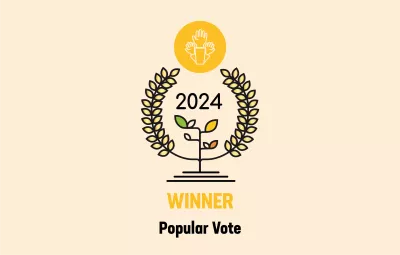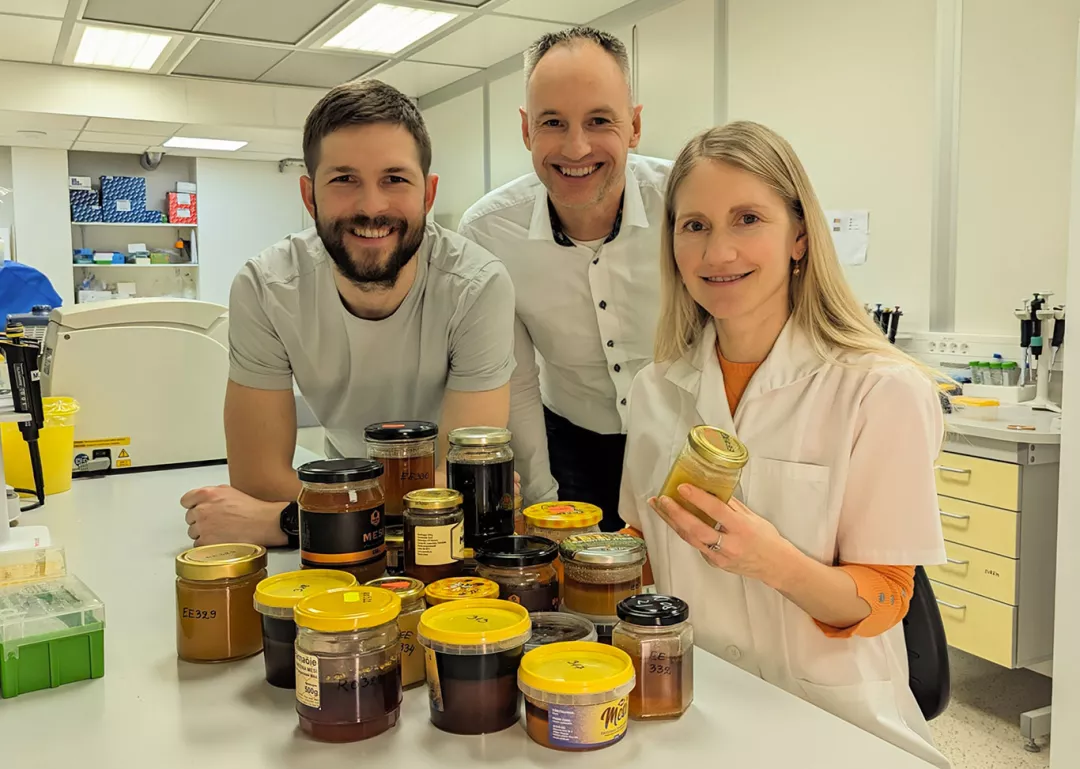General information
RDP Priority
- P1. Knowledge transfer and innovation
RDP Focus Area
- 1A: Innovation & cooperation
RDP Measure
- M16: Cooperation
Beneficiary type
- Operational group
Summary
A cooperation project in Estonia between beekeepers and researchers has developed a very innovative DNA-based method for honey analysis. Its unique, untargeted approach analyses all DNA traces from honey production environments, namely plants, animals, bacteria, fungi and viruses.
This comprehensive picture of honey enables producers to get proof of authentic honey origin for fair and transparent competition in the honey market. The project created DNA-based methods to describe not only the whole biological composition of honey but also the environment of honeybee foraging and honey production (including pollen and nectar plants, bacteria, fungi, animals and viruses) and, based on that, the origin and authenticity of honey.
The project methods have enabled the creation of a honey DNA-based test as a service for producers and distributors to analyse the honey’s botanical composition, monitor honeybee pathogens and parasites, and analyse the origin and authenticity of honey. This is a new kind of honey analysis not only in Estonia, but globally.
The project has provided a boost for the beekeeping industry, helped to develop laboratory expertise, brought about extensive data generation and inspired scientific interest in honey DNA analysis, engaging students ranging from high school to PhD level in research projects.
Results
- Boosted beekeeping industry: increased number of beekeepers, apiaries and honeybees, benefiting both beekeepers and farmers through improved pollination services.
- Improved laboratory expertise: cultivated a highly skilled laboratory team with gender-equal work opportunities. 5-7 specialists involved in the project in addition to beekeepers and project coordinator: project (female) manager, 1-2 (female) lab specialists and 1-2 (male/female) bioinformaticians, most of whom are younger than 40.
- Extensive data generation: analysis of the biological composition, origin and authenticity of around 600 honey samples.
- Educational impact: inspired scientific interest in honey DNA analysis, engaging one PhD, two bachelor and two high-school students in research studies about honey DNA analysis and getting them involved in the lab. After the project, several students also contacted the research lab.
- Empowered beekeepers with comprehensive knowledge about honey composition, origin and honeybee health.
- Enhanced honey quality and trust, establishing transparent quality labels for consumers.

Promoter
OÜ Muhe Mesi / Tervisetehnoloogiate Arenduskeskus AS*
* The Project promoter/beneficiary is an EIP-AGRI Operational Group ©
Funding
Total budget: 401 597 (EUR)
EAFRD: 279 863 (EUR)
National/Regional: 69 966 (EUR)
Private/Own funds: 51 768 (EUR)
Ressources
Documents
Context

Honey is one of the most frequently adulterated food products, with synthetic or fake honey often sold at a much lower price than genuine honey. To address the shortcomings of existing analytical methods, beekeepers initiated a project aimed at improving honey authentication.
Current challenges include undetected adulterations, limited test sensitivity and the small number of studied markers, which only partially represent the honey's complexity. Beekeepers discussed the issues related to honey adulteration on television, which caught the attention of researchers experienced in DNA analysis. Together, the beekeepers and researchers decided to launch a project to develop new DNA-based methods for honey analysis.
The test developed by the project, which uses a honey DNA metagenomic method, analyses the whole spectrum of organism groups represented in honey. It breaks down tens of millions of DNA sequences from thousands of species, creating a unique, natural, inimitable DNA fingerprint profile for every honey. The highly complex and naturally created profile of the honeybee thus allows the detection of the authenticity and origin of honey.
Many levels of stakeholders were involved, from beekeepers, beekeeper organisations and beekeeping and honey commercialisation-related companies to honey and bee research organisations in Estonia and other countries, university researchers, test/service laboratories right up to ministries and policymakers.
Objectives
The main aim of the project was to boost rural economies in Estonia by stimulating sustainable honey production. The test would also empower beekeepers through fair trade practices and improve their livelihoods thanks to the ability to prove the authenticity and origin of their honey. The depth and accuracy of the test, with its tens of millions of DNA sequences involved, also helps to safeguard honeybee health and enable efficient monitoring of parasites and pathogens. It contributes to protecting bee populations by reducing mortality and preventing disease outbreaks.
Activities
The project focused on developing a DNA-based method for comprehensive honey analysis. Activities funded by the CAP included beekeeper engagement, involving outreach to beekeepers through seminars, festivals and media to introduce the project and collect honey samples. There was also laboratory method development, where researchers worked on the optimisation of DNA extraction, library preparation and sequencing protocols using Illumina technology. In addition, the team constructed a reference database of genomic sequences and developed bioinformatics tools for honey DNA analysis.

This enabled honey characterisation via the development of bioinformatics methods to determine a given honey's botanical and taxonomic composition. This provides traceability, with the team working on the creation of models to identify honey authenticity and geographical origin based on DNA profiles.
All of these various aspects were carried out in close cooperation with beekeepers to align the research with the needs and expectations of those in the field. The team also worked with them closely on honeybee health monitoring with the research carried out enabling the development of methods to detect honeybee pathogens, parasites and pests through honey DNA analysis.
The knowledge transfer worked both ways. Once conclusions were reached, the project findings were disseminated back to beekeepers through feedback, presentations and media outreach.
A commercial honey DNA testing service (www.mda-test.com) was subsequently established and was funded separately.
The project had two main partners: a beekeeping company by the name of Muhe Mesi OÜ and the Tervisetehnoloogiate Arenduskeskus OÜ (competence centre on health technologies), which is a biotechnology company focused on scientific research and product development. The Centre of Estonian Rural Research and Knowledge (METK) and the Estonian Ministry of Regional Affairs and Agriculture also became involved as the project progressed.
Main results
The project boosted the beekeeping industry, leading to an increased number of beekeepers, apiaries and honeybees and benefiting both beekeepers and farmers through improved pollination services. It also helped to develop laboratory expertise and cultivate a highly skilled team. Importantly, there were equal work opportunities across genders. In addition to the beekeepers and project coordinator, between five and seven specialists were usually involved in the project: a female project manager, one or two female lab specialists and one or two bioinformaticians – one or both being female. Most of those involved were also under the age of 40.
Extensive data was generated in the analysis of the biological composition, origin and authenticity of approximately 600 honey samples. This also helped to create an educational impact, inspiring scientific interest in honey DNA analysis. A PhD student, two undergraduate degree students and two high school students have done research studies into honey DNA analysis and been involved in the laboratory. Several students have also contacted the research laboratory since the conclusion of the project.
Key lessons
The project pioneered innovative technology, successfully adapting advanced DNA-based methods from medicine and applying them to food analysis, resulting in a commercially available honey DNA test that meets the needs of all industry stakeholders.
It enhanced honey market integrity, developing a solution to promote fair honey trade, safeguard honeybee health through pathogen monitoring, and provide detailed honey composition information. It also strengthened industry collaboration, fostering strong partnerships between beekeepers and researchers and creating a foundation for future collaborative projects.
Contact Information
Mart Kullamaa / Kairi Raime

